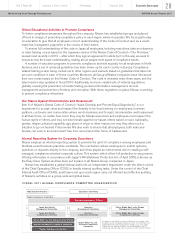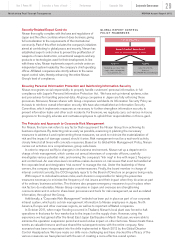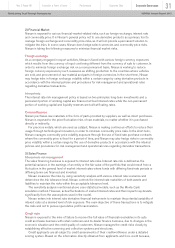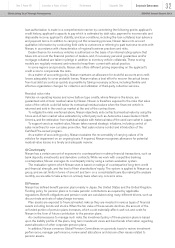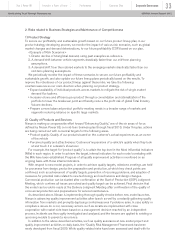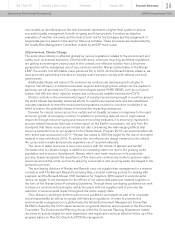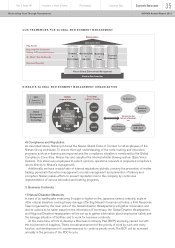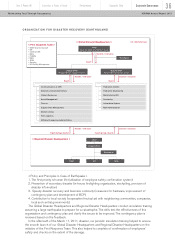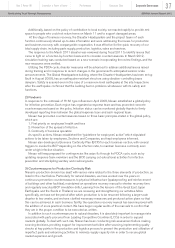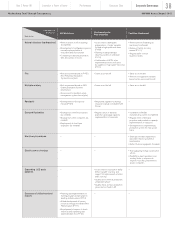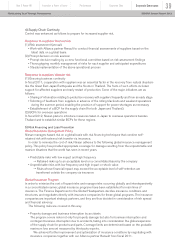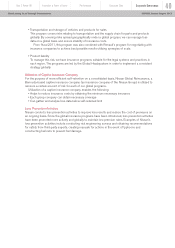Nissan 2012 Annual Report Download - page 39
Download and view the complete annual report
Please find page 39 of the 2012 Nissan annual report below. You can navigate through the pages in the report by either clicking on the pages listed below, or by using the keyword search tool below to find specific information within the annual report.
HR/Workforce Facilities/Equipment
3 elements of
production
• Reinforcement of office buildings
(completed)
• Development of earthquake response
manual, implementation of
evacuation drills (once/year)
• Conducting of disaster prevention
drills (once/year or more)
• Assessment of earthquake
preparedness of major suppliers
located in high quake-risk areas
(FY08)
• Planning to adopt damage
reporting system on web base
(FY10)
• Confirmation of BCPs to be
implemented at time of disaster
by suppliers in high quake-risk areas
(FY11)
• Reinforcement of buildings &
machinery (continued)
• Regular audits of each
business facility
• Review of facility recovery
manual (FY11)
• Risk assessment based on F-PES
(Fire Prevention Evaluation
System) (once/year)
• Same as on the left • Same as on the left
• Revision of equipment standard
based on the assessment result
• Same as on the left• Risk assessment based on SES
(Safety Evaluation System)
(once/year)
• Assessment for health & safety
management system (once/year)
• Same as on the left
• Development of flu response
manual (FY09)
• Requested suppliers to develop
response manual coordinated with
Nissan
—
• Backup from other Nissan plants
(as needed)
• Backup from other companies (as
needed)
• Employment of short-term
employees (as needed)
• Global development of human
resources through the Global Pilot
Plant program (FY11)
• Regular check of demand
projection and supply capacity;
implementation of measures
• Installation of flexible
manufacturing system (completed)
• Regular check of demand
projection and production capacity;
implementation of measures
• Development of complementary
production system for main power
trains
—— • Share past incident experiences
and reflect them in preventive
maintenance
• Reflect them in equipment standards
• Assessment of monozukuri ability
before supplier sourcing and
support for improvement activities
after sourcing
• Quality assessment at production
preparation phase
• Quality check at mass production
phase (action “Gate 1-3”)
—
—
• Planning and implementation of
training program at each plant to
develop skilled workers (FY10)
• Development of experts to teach
technical skills (planning and
implementation from FY12)
——
Natural disasters (earthquakes)
Fire
Workplace injury
Pandemic
Demand fluctuation
Machinery breakdown
—— • Thoroughgoing energy conservation
efforts
• Flexibility in plant operations and
working hours in response to
requests from the government or
power companies
Electric power shortage
Expanding LCC parts
adoption
Decrease of skilled workers/
experts
Risk factor
Purchased parts/
Raw materials
Innovation & Power of brandYear 2 Power 88 Performance Corporate Data
Corporate Governance 38
NISSAN Annual Report 2012Maintaining Trust Through Transparency


